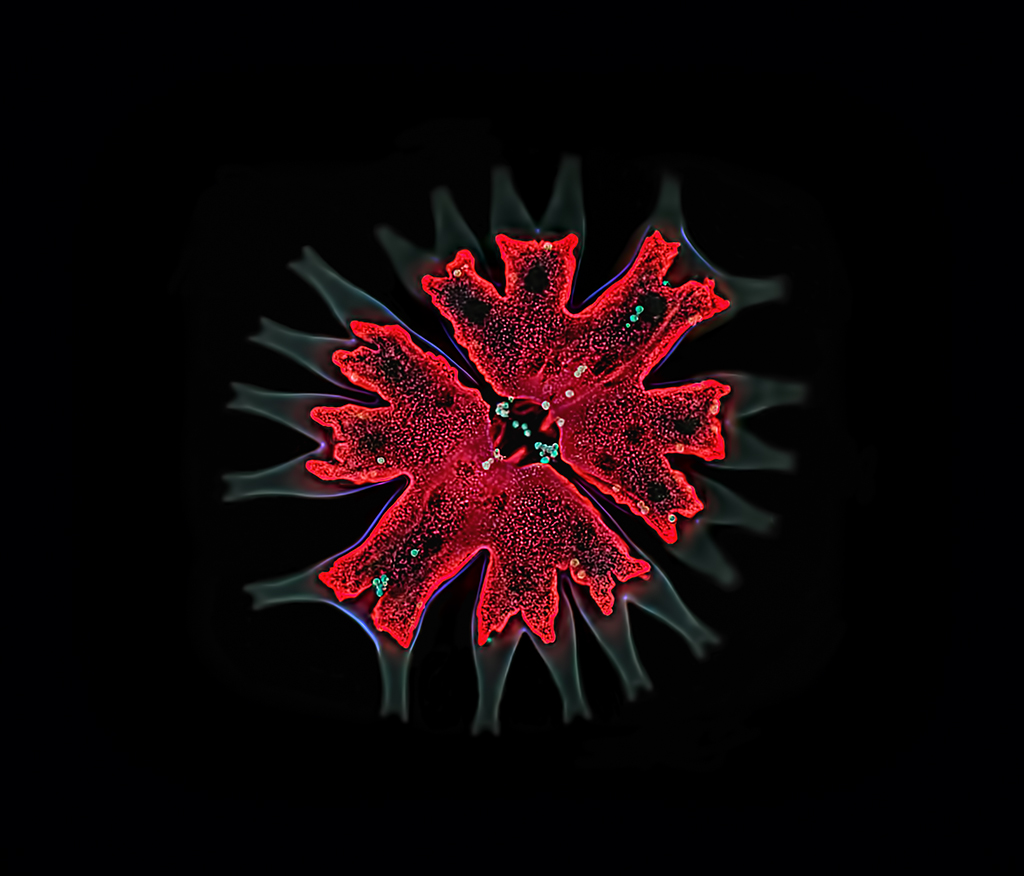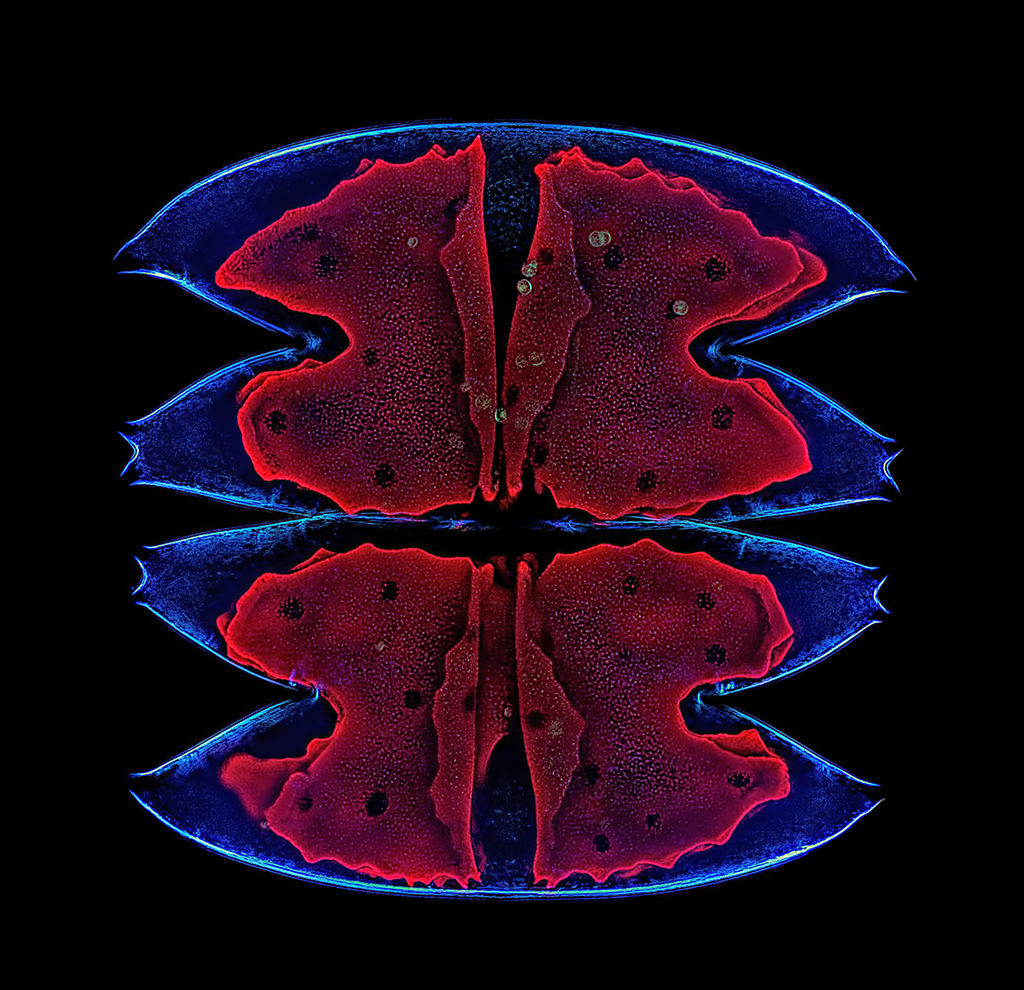Thank you, Rogelio and Rik. Very glad to have additional detail. Now I can read up on cellSens and Autoquant--the latter, on brief review, looks especially interesting.
Since deconvolution is a portion of what is done in confocal and other enhanced-resolution approaches, I wondered, seeing Rogelio's images, if this were a software-only deconvolution, or a hardware plus software approach. And Web searches are so much better when one has proper search terms--"cellSens" and "Autoquant" return much more target results than "3D deconvolution."

A few questions:
Rogelio, do you mind naming which software you used for these images?
Is the software deconvolution performed on the pre-stacked, individual frames; on the stacked image; or does it compare the individual images of the stack, deconvolve them, and then save altered versions that can then be fed to Zerene Stacker?
Edit: Having just watched one of the Autoquant tutorials, it appears that for 3d deconvolution, the answer is the third above.
Does the image have to be a fluorescence image? I often do subjects against a black background, and would be interesting in trying deconvolution on some of them.
Edit: From the tutorial, I see that there is also the option of using Autoquant for brightfield images. The images I'm thinking of are more like darkfield, though it's really just oblique backlight. I suspect that unless somebody has tried it, this answer is unknowable.
Am I correct in presuming that 3D deconvolution only improves images taken in a diffraction-limited regime?
Any clue on the price of either of software packages Rogelio named? I may contact the purveyors for a quote, but have a strong suspicion that he answer will make my nose bleed.
Cheers,
--Chris






